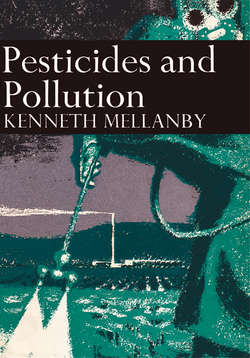Читать книгу Pesticides and Pollution - Kenneth Mellanby - Страница 9
CHAPTER FOUR RADIATION
ОглавлениеSince the first atomic bombs were dropped on Japan in 1945, we have been aware of the dangers of “atomic radiation.” Radiation, in sufficient quantities, is clearly dangerous to human and to other forms of life. Man has polluted the earth by releasing radiation and radio-active materials as the result of testing nuclear weapons, by accidental discharges from nuclear power stations, by the waste products from these power stations, by the use of radio-active substances in industry, in research and in medicine and by the use of X-rays in clinical diagnosis and in the treatment of disease. My task here is to assess the danger to man, animals and plants from the pollution that has so far occurred, and to discuss possible future risks from this source.
This is not the place for a detailed discussion of the nature of radiation, but some account is necessary for readers with little background knowledge of the subject. Atomic radiations, which are physically of several different kinds, some consisting of electromagnetic waves and some of bits of atoms moving at high speeds, all have similar chemical and biological effects. These radiations are invisible, and they penetrate living tissues to a greater or lesser extent; some are stopped in the first fraction of an inch of skin, others go deep into the body. All the radiations we are considering here are called “ionising radiations”; this means that they have the property of knocking out electrons from the atoms in the substances they pass through, and producing “ionised atoms” which have great chemical activity. When this occurs in a living cell, the usual effect is for the cell to be damaged. A large dose of radiation, producing many active ions, can cause the cell to die almost immediately. A very small dose may have no noticeable effect, though even the most minute amount of radiation causes some change in some part of the cell.
Ionising radiations arise from various sources. Before man made his contribution natural background radiation existed, and is still the most important source in most areas of the world, and it has the greatest effect on its human and other inhabitants. Three-quarters of the background radiation affecting man comes from outside his body; a third of this fraction is due to cosmic rays reaching the earth from outer space, and two-thirds is due to the local radioactivity of many of the rocks. Cosmic ray radiation is partially absorbed by the atmosphere, and is therefore much greater at the top of mountains; at higher altitudes it may increase enormously, and could be a serious hazard to astronauts. Even high-flying birds will receive more cosmic rays than those which remain near the ground. The radio-activity of rocks varies in different parts of the world. Near uranium deposits it may be high, but the differences between different parts of Britain are probably under 50 per cent.
The rest of the natural radiation affecting man comes from radio-active substances within his body. The most important of these is potassium. Potassium is an essential constituent of all living tissues. A tiny fraction, about one part in ten thousand, of this naturally occurring potassium is radio-active, and this produces radiation within the body. Radiation generated within the body in the vicinity of a vital tissue may be very dangerous, compared with similar radiation coming from outside and perhaps being absorbed so as to cause only superficial damage.
Man has contributed to radiation exposure in various ways. First he has concentrated naturally occurring radio-active substances, particularly radium, and used their radiations for medical diagnosis (X-ray examinations and photographs) and for certain types of treatment. More recently he has learned how to produce radiations for scientific research, and to use them for industrial purposes. Finally he has learned to “split the atom” and from this knowledge have stemmed both nuclear weapons and nuclear power stations. A nuclear explosion is accompanied by intense radiation, the effects of which may go farther than those of the blast and heat. Secondly the explosion liberates a quantity of radio-active dust, which goes high into the sky and is slowly deposited as “fall out.” Atomic power stations produce radiations which would be dangerous to life nearby if precautions were not successful. The greatest worry relating to these stations is, however, that they produce large amounts of radio-active waste products which could cause great danger if not disposed of properly.
